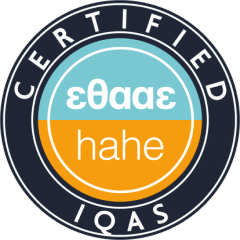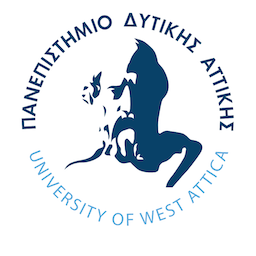Learning Results
The aim of the course is the ability of students to get to know the Specifics of the medium, the historical approach of space, photography and video documentary and to be able to express a more complex photographic narrative, a “static image” or the evolution of the movement of «an animated video image», in specialized topics. They should also be able to support it and integrate it into the current news.
At the end of the courses, students should have acquired a good knowledge of the specificities of photojournalism in both the still and the moving image and be able to critically support their work and the way in which it is presented.
General Abilities
- Search, analysis and synthesis of data and information, using the necessary technologies
- Adapt to new situations
- Decision-making
- Standalone work
- Teamwork
- Working in an international environment
- Criticize and self-criticism
- Demonstration of social, professional and moral responsibility and gender sensitivity
- Promoting free, creative and inductive thinking
Course Outline
THEORY
- The scene of the Greek and International News Agencies.
- The role of photography and video in the press.
- The use of photography and video on the print and electronic media. Type – Selection
- Criteria.
- The power of the image-
- Sports photography-and video recording of sports venues
- The street photography
- The motives of the news photographers.
- The social documentary as a creative work.
- The documentary photography as a lever for social reform.
- Snapshots of modern entrepreneurship.
- The technique of journalistic portrait.
- Theatrical performances, cultural events
- Photographers set
- The relationship with the authorities and ethics of the photographer and video take
LABORATORY
Complex photographic exercises that have as a central idea the concept of narrative in order to gain a strong scientific background and to expand their experience and know-how in the fields of news photography, photographic essay, journalistic video.
As a laboratory course, criticism will be done, with references to contemporary photographers and work. Weaknesses will be identified and original and creative initiatives will be supported during its development. There will be clear references to the way the narrative is presented, either in electronic or printed form.
RECOMMENDED BIBLIOGRAPHY
- Βλασσά Γρηγόρη , To χρονικό της Ελληνικής Φωτογραφίας, <1940-1981>, Athens, Photo Imaging Group Publications, 2009.
- Βλασσά Γρηγόρη, Επάγγελμα Φωτορεπόρτερ, Athens, Photo Imaging Group Publications, 2002.
- Βλασσά Γρηγόρη, Όψεις του Ελληνικού Πολιτισμού, Athens, Photo Imaging Group Publications, 2012.
- Βλασσά Γρηγόρη, Όπου υπάρχει φως, Athens, Photo Imaging Group Publications, 2011.
- Στεφανή Εύα , 10 κείμενα για το ντοκιμαντέρ, Athens, Patakis Publications,2007.
- Freund Gisele, Photography and society, David R Godine, 1980.
- Δούσης – Ρασιάς Νίκος , Οι διαδρομές της ψυχής μου, Marousi, Myrtos Publications, 2006.
- Roland Barthes, «La chambre Claire: note sur la photographie», Paris, Gallimard, Seuil, 1980.
- Sontag Susan, On Photography, London, Allen Lane, 1978.
- Σαρρηκώστας Αριστοτέλης, Αναμνήσεις ενός Έλληνα Φωτορεπόρτερ, Potamos Publications, 2006
- Arnheim Rudolf, Art and Visual Perception. A psychology of the creative eye, Berkeley, University of California Press, 1974.
- Γραμματικάκης Γιώργος, Η αυτοβιογραφία του Φωτός, Heraklion, Crete, University Publications of Crete, 2005.
- Πασχαλίδης Γρηγόρης, Τα νοήματα της φωτογραφίας, Thessaloniki, University studio press Publications, 2012.
- Τσατσούλης Δημήτρης, Η γλώσσα της εικόνας, Athens, Hellinika Grammata Publications, 2012.
- Χριστοδουλίδης Ανδρέας, Διεθνή και Εθνικά Πρακτορεία Ειδήσεων, Athens, Athens News Agency Publications, 2009.


